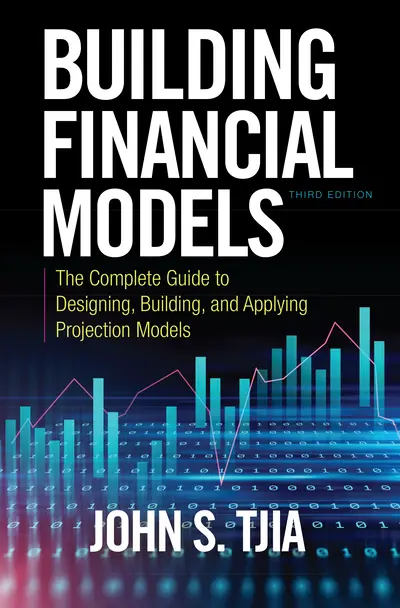My Account Details

ISBN10: 1260108821 | ISBN13: 9781260108828

Step 1 . Download Adobe Digital Editions to your PC or Mac desktop/laptop.
Step 2. Register and authorize your Adobe ID (optional). To access your eBook on multiple devices, first create an Adobe ID at account.adobe.com. Then, open Adobe Digital Editions, go to the Help menu, and select "Authorize Computer" to link your Adobe ID.
Step 3. Open Your eBook. Use Adobe Digital Editions to open the file. If the eBook doesn’t open, contact customer service for assistance.
The go-to guide for developing effective financial analysis and valuation models—updated with new content and materials
This fully revised edition of Building Financial Models builds on the elements that have made it renowned in the field of financial modeling, including how to develop a sound conceptual understanding of accounting for modeling and how to apply the tools at hand, which are the two key attributes for producing effective and easy-to-use models. A classic in how-to books for designing and building financial models for use in a wide variety of finance roles, this edition includes:
* The latest Microsoft Excel shortcuts, functions, and modeling techniques
* A full chapter on accounting that takes the mystery out of the subject for modeling work
* Expert methods for building models that are easy to understand and superbly fit to the task
* New additional materials on valuation analysis and sections on scenarios and sensitivity analysis through the use of Data Tables
Supported by all-new exercise files from the companion website, this comprehensive guide takes you step by step through the entire process of developing a projection model, starting with a basic pilot model with each chapter introducing additional concepts and features. By the end, you will produce—through your own hands-on participation--a fully functional and dynamic integrated financial statement projection and valuation model.
With Building Financial Models, Third Edition, you have everything you need to boost your financial modeling expertise.
Acknowledgments
Chapter 1: A Financial Projection Model
Chapter 2: Best Practices
Chapter 3: Setting the Stage
Chapter 4: The Model Building Toolbox: F Keys and Ranges
Chapter 5: The Toolbox
Chapter 6: Accounting in Modeling
Chapter 7: Building a Pilot Model
Chapter 8: Circular References and Iterative Calculations
Chapter 9: Variations on Balancing
Chapter 10: The Cash Sweep and Interest Calculations
Chapter 11: Reorganizing the Model
Chapter 12: Scenarios and Other Tips
Chapter 13: Ratios
Chapter 14: Forecasting Guidelines
Chapter 15: Discounted Cash Flow Valution
Chapter 16: Using VBA for Balancing
Appendix
Index
Need support? We're here to help - Get real-world support and resources every step of the way.